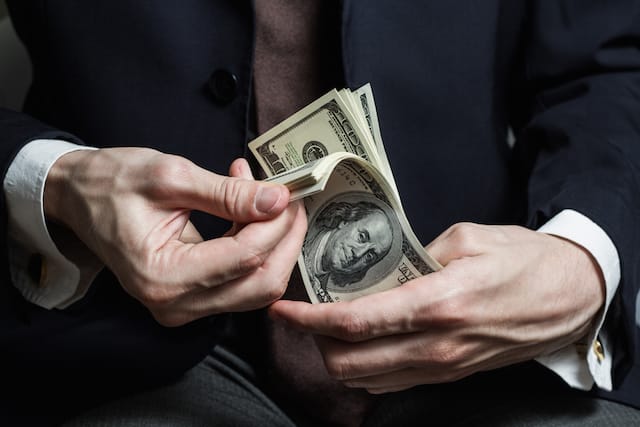
Meet successful sugar daddies and confident sugar babies on the world’s leading sugar dating app. Join free today.
Contents
Finding a Legit Sugar Daddy in the U.S. (2025 Guide)
The search for a sugar daddy in 2025 is easier than ever before; however, the prevalence of scam profiles, promises of “instant cash,” and phishing-based romance scams means that those dating in the United States must take both defensive and offensive measures. A real sugar daddy relationship can provide mentorship, financial benefit, and a better lifestyle, if individuals take measures to reduce exposure to fraud from the very beginning. This 1,700-word guide outlines the red flags, verification tips, and meeting protocols that protect newcomers and veteran participants alike. No matter where you are in the United States, being scam-free depends on two core principles: the quick recognition of fake sugar daddy behavior and the use of websites that emphasize strong security measures.
Professionals tracking fraud at the FTC note that romance‑impostor reports jumped again last year, driven partly by “cash‑flipping” sugar daddy scams on social media. Meanwhile, consumer cybersecurity teams at Norton echo the same theme: scammers promise easy allowances, then disappear once victims send “verification fees” or laundered funds.With stakes rising, this guide focuses on pragmatic steps to meet a genuine sugar daddy while keeping your money, identity, and emotional well‑being intact.
Red Flags in Sugar Daddy Dating Apps
Not every flashy profile belongs to a real sugar daddy. These common red flags should trigger an immediate pause:
-
Too‑good‑to‑be‑true allowances – Scammers posing as a sugar daddy often offer thousands of dollars weekly before any meeting. Real patrons negotiate after rapport.
-
Gift‑card or crypto demands – When a “generous” sugar daddy asks you to “prove you’re serious” by buying gift cards or moving Bitcoin, exit the chat.
-
Rapid platform switch – A fake sugar daddy tries steering you from a verified app to WhatsApp, Instagram, or a throw‑away email within minutes, bypassing safety features.
-
Unverifiable photos – Reverse‑image searches reveal many scam sugar daddy photos appear on model catalogs or corporate headshots.
-
Pressure to role‑play money mule schemes – Fraudsters use “sugar daddy” scripts to trick targets into funneling stolen funds.
-
Inconsistent bio details – A supposed Fortune 500 executive sugar daddy who spells the company name wrong or dodges basic industry questions signals fraud.
Modern dating apps like Sugarbook and SugarDaddy.com deploy AI to catch these cues, but staying vigilant yourself remains vital. Reviews of SugarDaddy.com highlight robust two‑step photo and ID checks, making it one of the safer mainstream hubs for an authentic sugar daddy connection.
Real vs Fake Sugar Daddy Profiles: What to Look For
Distinguishing a genuine sugar daddy from a scammer involves scanning both digital breadcrumbs and conversational patterns.
Verification Badges and Income Proof
Legit platforms display color‑coded badges once a sugar daddy passes ID or income screening. Sugarbook’s 2025 dashboard, for example, marks verified sugar daddy accounts with a shield icon updated every 12 months. No badge? Ask for platform‑approved verification—never accept screenshots alone, because scammers fabricate “bank statements” with online generators.
Social Consistency
A real United States‑based sugar daddy typically shows a coherent online footprint: a LinkedIn profile aligned with his stated title, perhaps a press quote or charity board listing. Conversely, fake sugar daddy handles often share zero mutual contacts, have empty timelines, or use stock‑image banners.
Conversational Depth
A legitimate sugar daddy can discuss business milestones, philanthropic passions, or city‑specific recommendations (think Michelin restaurants in Chicago or art fairs in Miami). Scammers script vague luxury fantasies without details. Ask open‑ended questions: “What drew you to that venture capital segment?” A true sugar daddy answers fluidly; fraudsters pivot or deflect.
Payment Method Transparency
Real sugar daddy patrons propose allowances through traceable means—bank transfer, PayPal business invoices, or app‑sanctioned payout systems. Fake sugar daddy actors insist on untraceable channels such as wire services or prepaid debit cards.
Video Verification
Most scammers refuse live video. A trustworthy sugar daddy welcomes a quick video introduction, proving he matches his profile and eliminating catfish risk.
Spot these cues, and you shrink the scam window dramatically while edging closer to a rewarding sugar daddy arrangement.
Tips to Stay Safe When Meeting a Sugar Daddy
Even after digital vetting, the first offline encounter with a potential sugar daddy requires layered safeguards.
-
Pick a public, upscale venue – Luxury hotel lounges or well‑reviewed rooftop bars offer discreet ambiance plus cameras and staff, deterring bad actors.
-
Share live location with a confidant – Many sugar babies ping a trusted friend when meeting a new sugar daddy. Use secure apps that update location in real time.
-
Arrive and depart independently – Driving yourself or using a rideshare prevents any sugar daddy—even an honest one—from controlling your transportation.
-
Keep valuables minimal – Bring only essential cards and ID. Scammers sometimes target high‑value bags or jewelry, knowing sugar culture gravitates to visible luxury.
-
Clarify allowance basics, not exact sums – General expectations (“weekly support” or “per‑meet gifts”) suffice at first. Avoid disclosing bank details until the sugar daddy proves reliability over multiple meetings.
-
Keep drinks in sight – As in traditional dating, never leave beverages unattended. Although drug‑facilitated crimes are rare, scammers leveling up from digital theft may attempt physical theft.
-
Listen for inconsistent timelines – A fraudulent sugar daddy often forgets which “conference” he’s attending or mixes up his claimed residency. Note discrepancies on the spot.
These habits internalize risk management so meeting an authentic sugar daddy becomes an exciting step rather than an anxious gamble.
Why Verified Sugar Daddy Platforms Matter
Using a fully vetted marketplace remains the single biggest predictor of scam‑free experiences. Here’s why:
Centralized ID Checks
Platforms like SugarDaddy.com require driver‑license uploads, cross‑referencing facial recognition and database lookups to block repeat scammers. Industry analysts cite these checks as core to its 2025 “trusted” label.
Secured Messaging Ecosystems
Messages on verified sugar daddy apps run through end‑to‑end encryption and automated fraud flagging. Suspicious links or keywords trigger internal reviews, stopping phishing before it reaches users.
Transparent Moderation
Top‑ranked apps publicize takedown numbers and response times, showing how many fake sugar daddy accounts they removed each quarter. Transparency builds trust.
Payment Mediation
Some platforms hold allowances in escrow until both parties confirm satisfaction, preventing a dishonest sugar daddy from retracting funds or an inexperienced sugar baby from vanishing post‑transfer.
Community Reporting
Users can one‑click flag a suspect sugar daddy profile, accelerating bans. Apps with large U.S. audiences – Sugarbook, leverage rapid user reports to curate safer spaces.
Opting for Facebook groups or random Instagram DMs invites chaos; joining a verified sugar daddy platform erects structural walls between you and scammers.
Putting It All Together: Your Scam‑Proof Sugar Daddy Action Plan
Finding a legitimate sugar daddy in the United States boils down to disciplined strategy rather than chance. Follow this layered blueprint:
-
Filter first by verification badge – Swipe left on any sugar daddy profile missing platform‑issued proof.
-
Evaluate social depth – Look for consistent employment, public philanthropic ties, and city‑appropriate knowledge.
-
Use video early – Schedule a three‑minute FaceTime or in‑app video chat before discussing finances with any sugar daddy.
-
Reject up‑front money flips – Real sugar daddy relationships operate on transparent, traceable payments, never prepaid requests.
-
Meet publicly – Choose venues with staff and cameras; arrange independent transport.
-
Leverage secure payment tools – Ask the sugar daddy to use app escrow, PayPal business, or ACH transfers that show sender identity.
-
Document agreements – Email or in‑app chat creates a time‑stamped paper trail of arrangements, deterring disputes.
-
Report anomalies swiftly – Platforms kick off investigations faster when evidence comes immediately after a shady sugar daddy interaction.
Commit to these steps and you significantly raise your odds of forging a beneficial connection while sidestepping scam traps.













